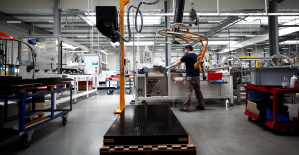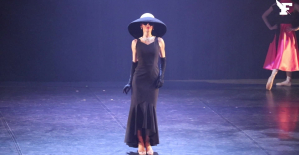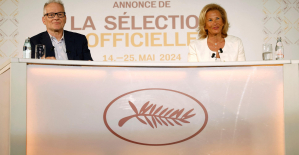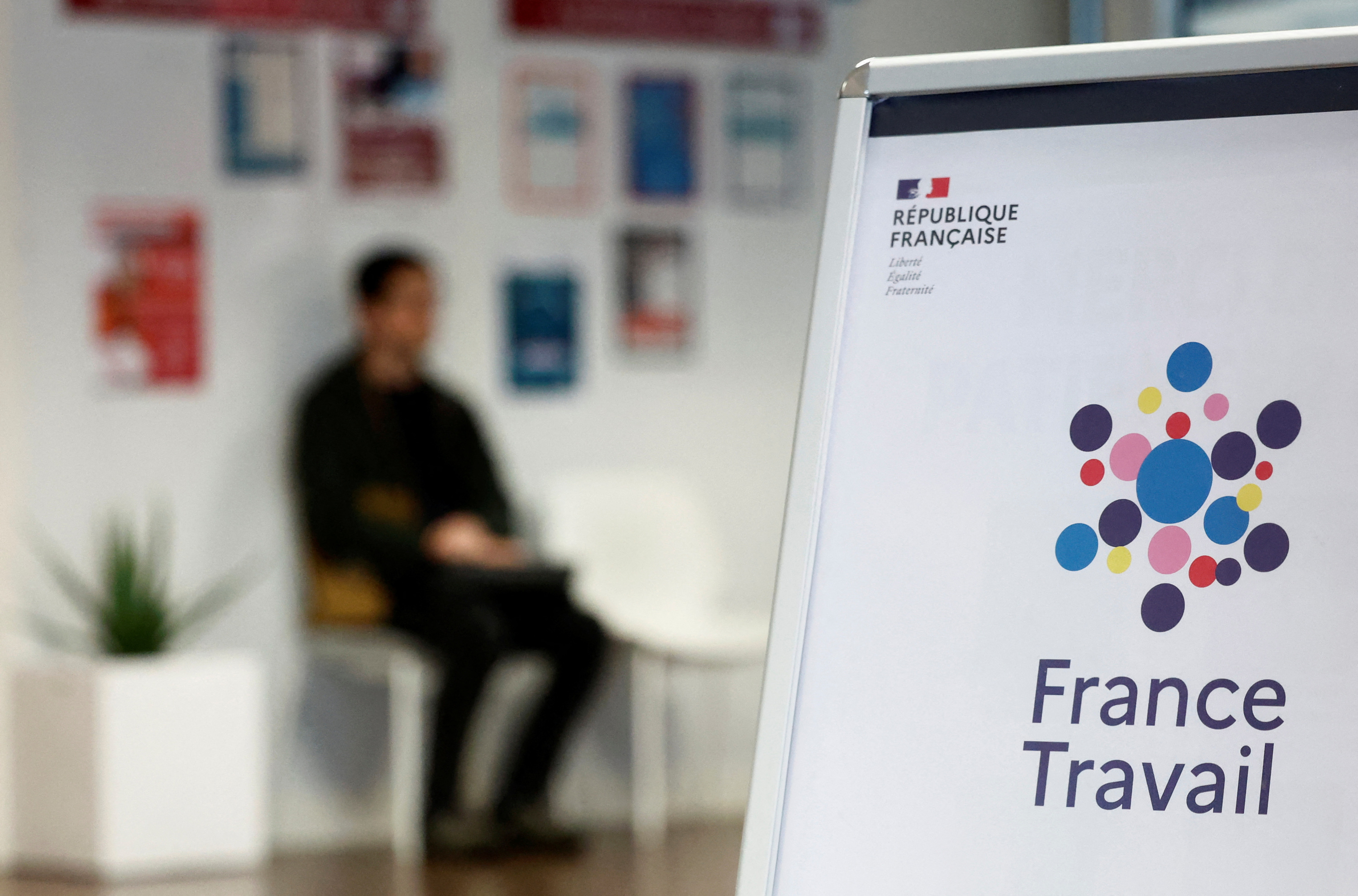1. In may 1798, just before noon, it came to Einsiedeln in the monastery Church, directly in front of the chapel of grace, a scuffle between the monks. At the forefront of the Subprior Fintan Steinegger, the chapel brother on the other side. It was a question of whether you should bring the mother of God statue, the Black Madonna, in security or it is now only right here on-site is needed. Because the French advanced on the Etzel. And that this had Einsiedeln with the Church in General, and with the mighty monastery, a fortiori, nothing Good in the sense that was generally known.
This scene is emblematic for the time worked up to the hermit, father, and historian Thomas Fässler in an over 600-page book. It was last year by Professor André Holenstein, University of Bern, as a Dissertation recognized and moves the history the heart of Switzerland, in some areas in a new light. The book reads also for interested laymen.
the Enlightened monks
The scene in front of the miraculous image shows an example of how the still in the middle ages arrested the world began to change in the Wake of the enlightenment and a new, more rational people picture place. Also in the monastery: Here, the Subprior, the ties with the help of the Madonna directly to the presence of your image, since the chapel brother, of the mind, the image only as an Image of the Madonna.
In the previous historiography, the heart of Switzerland, was regarded largely as "enlightenment". As father Thomas explains this in the first line with the Historiography of the 19th century. To do century. "The people, the historians, the enlightenment directly with the invasion of the French, and the resulting Chaos. Enlightenment was for you Revolution. So you wanted to have nothing to do."
Fässler shows in his doctoral thesis that there were in the heart of Switzerland, this is quite a clear flow of enlightenment thought, not least led by the friars of the monastery of Einsiedeln. The monastic community took at the time, about a hundred members, a good third were brothers, who were mainly trained in craft skills. Among the fathers, says Thomas Fässler estimates, probably a good dozen of the ideas of the enlightenment open to all.
This Catholic enlightenment was not, of course, so far, the existence of God in question, or the divine Providence of small talk. But they found, in particular in the education system to an advanced point of view: education should benefit the people directly. More specifically, it was about: language, and Arithmetic instead of Latin and Greek. There were hermit fathers, which are driven with respective treatises, and educational writings of this thought in the heart of Switzerland, and even new teaching materials written, so this was not just theory. This had an impact in the Region as a whole, held the village priest, in a way, the supervision of the elementary school.
The networked Abbot
"in the middle in Central Switzerland, a number of monks enlightenment ideas enthusiastically seized upon and implemented, is actually amazing," says Thomas Fässler. What stunned him outright, was the systematic integration of policy, which the operation at the time, the monastery rich. Small and Large: So it was given to village residents, but also to Schwyzer men in or out of Schwyz, the politicians of loans, often interest-free, to take. "You bought specifically by financial capital social capital," says Fässler. That is not enough: The monastery moved also on the international stage, because there, the Abbot of Einsiedeln was a Prince of the Holy Roman Empire of the German Nation absolutely at home.
This finally led to a real scandal, the contemporary critic as "treason" is released. The affair was swept afterwards, however, as far as possible under the carpet, so she was hardly known. Thomas Fässler this event brings to light, washed free him completely from the suspicion that he writes as a hermit-monk, "the complacency of the story". In the case of the so-called defence of his Dissertation, the chair Professor finally asked: "back to Dare you at all back to the convent?"
the following happened: in 1792 and 1796, Emperor Franz II asked the Abbot of Einsiedeln to take out a loan to Finance the war against France. Both times was answered the request positively. So, an Emperor of the house of Habsburg-Lorraine debtor to the monastery of Einsiedeln.
"in the middle in Central Switzerland the monks enlightenment ideas took up enthusiastically, is amazing."Father Thomas Fässler, historian
the then considerable sum of 100'000 florins as a loan was Transferred. It was, however, anxious that this transaction remained a secret.
Purely altruistic was not, however, because the Abbot doubted more and more because of the state of Schwyz would be able to protect the monastery from the French troops. If he had ever wanted. Fässler shows how ambivalent were the Schwyzer in the confrontation with the French Revolution: "in Order to save their own skin, they would have the monastery, without hesitation, the French delivered."
spy
arrested was itself the mighty Bern under the onslaught of the French forces, sent the Abbot of Einsiedeln, 8. March, a desperate cry for help to the Emperor. The officer, a messenger came in Bubikon, however, in a Handel and the Rapperswil and the city of Zurich, fought just, and was suspected of spying. As the poor fellow believed himself to be unobserved, he tore the letter of the Abbot, but was caught. The letter was puzzled together in Küsnacht and Zurich members read the following rows of the Abbot: "In our extreme danger and distress, particularly since the Swiss franc in our Sanctuary seem to have long verboset, nemmen, We Ew the etwan still possible refuge. Exc., our high and best friend. (. . .) The Catholic and pious Switzerland wish, but like also maybe to late, under the Imperial control tretten." (State archives of Schwyz, files 1, 588.004, No. 5)
in fact, It was too late: On the 2. and 3. May marched with the French troops in the most of the monks fled and abandoned Einsiedeln. One of the first commands of what the leader of the French, General von Schauenburg granted after the taking of the monastery, was to create the "vierge prétendue miraculeuse". The chapel of grace, was completely destroyed, the monastery up to the last chair looted. The Europe-famous Black Madonna should be brought to Paris by Napoleon as spoils of war in the triumphal procession to the Pantheon. So it happened.
at The beginning mentioned chapel brother, however, had on 1. May, as the Subprior at lunch was, the image of the Madonna with a copy replaced the Original. As Schauenburg, was later told that it was his spoils of war, only a copy of the "allegedly miracle-working Madonna," he replied succinctly: "Ça m'est égal."
Thomas Fässler: awakening and resistance. The monastery of Einsiedeln in the field of tension of the Baroque, the enlightenment and Revolution. Thesis-Publishing In 2019. 643 p., CA. 48 Swiss francs.
(editing Tamedia)
Created: 16.04.2019, 18:11 PM

 Germany: the trial of an AfD leader, accused of chanting a Nazi slogan, resumes this Tuesday
Germany: the trial of an AfD leader, accused of chanting a Nazi slogan, resumes this Tuesday New York: at Columbia University, the anti-Semitic drift of pro-Palestinian demonstrations
New York: at Columbia University, the anti-Semitic drift of pro-Palestinian demonstrations What is Akila, the mission in which the Charles de Gaulle is participating under NATO command?
What is Akila, the mission in which the Charles de Gaulle is participating under NATO command? Lawyer, banker, teacher: who are the 12 members of the jury in Donald Trump's trial?
Lawyer, banker, teacher: who are the 12 members of the jury in Donald Trump's trial? What High Blood Pressure Does to Your Body (And Why It Should Be Treated)
What High Blood Pressure Does to Your Body (And Why It Should Be Treated) Vaccination in France has progressed in 2023, rejoices Public Health France
Vaccination in France has progressed in 2023, rejoices Public Health France Food additives suspected of promoting cardiovascular diseases
Food additives suspected of promoting cardiovascular diseases “Even morphine doesn’t work”: Léane, 17, victim of the adverse effects of an antibiotic
“Even morphine doesn’t work”: Léane, 17, victim of the adverse effects of an antibiotic Orthodox bishop stabbed in Sydney: Elon Musk opposes Australian injunction to remove videos on X
Orthodox bishop stabbed in Sydney: Elon Musk opposes Australian injunction to remove videos on X One in three facial sunscreens does not protect enough, warns L'Ufc-Que Choisir
One in three facial sunscreens does not protect enough, warns L'Ufc-Que Choisir What will become of the 81 employees of Systovi, a French manufacturer of solar panels victim of “Chinese dumping”?
What will become of the 81 employees of Systovi, a French manufacturer of solar panels victim of “Chinese dumping”? “I could lose up to 5,000 euros per month”: influencers are alarmed by a possible ban on TikTok in the United States
“I could lose up to 5,000 euros per month”: influencers are alarmed by a possible ban on TikTok in the United States Dance, Audrey Hepburn’s secret dream
Dance, Audrey Hepburn’s secret dream The series adaptation of One Hundred Years of Solitude promises to be faithful to the novel by Gabriel Garcia Marquez
The series adaptation of One Hundred Years of Solitude promises to be faithful to the novel by Gabriel Garcia Marquez Racism in France: comedian Ahmed Sylla apologizes for “having minimized this problem”
Racism in France: comedian Ahmed Sylla apologizes for “having minimized this problem” Mohammad Rasoulof and Michel Hazanavicius in competition at the Cannes Film Festival
Mohammad Rasoulof and Michel Hazanavicius in competition at the Cannes Film Festival Skoda Kodiaq 2024: a 'beast' plug-in hybrid SUV
Skoda Kodiaq 2024: a 'beast' plug-in hybrid SUV Tesla launches a new Model Y with 600 km of autonomy at a "more accessible price"
Tesla launches a new Model Y with 600 km of autonomy at a "more accessible price" The 10 best-selling cars in March 2024 in Spain: sales fall due to Easter
The 10 best-selling cars in March 2024 in Spain: sales fall due to Easter A private jet company buys more than 100 flying cars
A private jet company buys more than 100 flying cars This is how housing prices have changed in Spain in the last decade
This is how housing prices have changed in Spain in the last decade The home mortgage firm drops 10% in January and interest soars to 3.46%
The home mortgage firm drops 10% in January and interest soars to 3.46% The jewel of the Rocío de Nagüeles urbanization: a dream villa in Marbella
The jewel of the Rocío de Nagüeles urbanization: a dream villa in Marbella Rental prices grow by 7.3% in February: where does it go up and where does it go down?
Rental prices grow by 7.3% in February: where does it go up and where does it go down? Europeans: “All those who claim that we don’t need Europe are liars”, criticizes Bayrou
Europeans: “All those who claim that we don’t need Europe are liars”, criticizes Bayrou With the promise of a “real burst of authority”, Gabriel Attal provokes the ire of the opposition
With the promise of a “real burst of authority”, Gabriel Attal provokes the ire of the opposition Europeans: the schedule of debates to follow between now and June 9
Europeans: the schedule of debates to follow between now and June 9 Europeans: “In France, there is a left and there is a right,” assures Bellamy
Europeans: “In France, there is a left and there is a right,” assures Bellamy These French cities that will boycott the World Cup in Qatar
These French cities that will boycott the World Cup in Qatar Serie A: Bologna surprises AS Rome in the race for the C1
Serie A: Bologna surprises AS Rome in the race for the C1 Serie A: Marcus Thuram king of Italy, end of the debate for the position of number 9 with the Blues?
Serie A: Marcus Thuram king of Italy, end of the debate for the position of number 9 with the Blues? Milan AC-Inter Milan: Thuram and Pavard impeccable, Hernandez helpless… The tops and flops of the derby
Milan AC-Inter Milan: Thuram and Pavard impeccable, Hernandez helpless… The tops and flops of the derby Ligue 2: Auxerre leader, Bordeaux in crisis, play-offs... 5 questions about an exciting end of the season
Ligue 2: Auxerre leader, Bordeaux in crisis, play-offs... 5 questions about an exciting end of the season


















